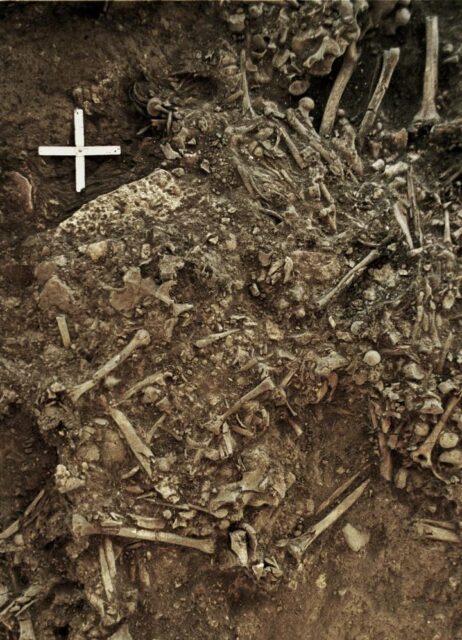A new strain of Yersinia pestis, the bacteria that causes plague, has been found in DNA extracted from 5,000-year-old human remains in a Swedish tomb. A team of researchers from France, Sweden, and Denmark now believe that a previously unknown form of the disease could have killed around 500 million people over 12,000 years. In their study, they were able to identify one human being who died of this plague and was buried in the tomb as a 20-year-old woman. Their analyses suggest that this strain is the closest anyone has ever identified to the genetic origin of plague.
The discovery changes things

The plague most likely spread among ancient European settlements by way of traders moving from camp to camp, the scientists explained. Its deadly advance may have contributed to the decline of the continent’s settlements at the start of the early Bronze Age around 3000 BC. This find could help solve a long-held scientific mystery.
“Between 5,000 and 6,000 years ago, many Neolithic societies declined throughout western Eurasia due to a combination of factors that are still largely debated,” the study authors wrote in the journal Cell. The most accepted explanations for the collapse of the first mega-settlements in Europe were environmental over-exploitation, with a decrease or even extinction of forests and the expansion of steppe environment or a confrontation with foraging Steppe populations. However, now it is believed that the reason could have been a horrific plague pandemic.
A possible epidemic?

“The finding came about as the researchers were analyzing publicly available databases of ancient DNA for cases in which infections might have claimed prehistoric victims,” according to LiveScience. “They focused on the previously excavated site of Frälsegården in Sweden.”
Previous analysis of a limestone tomb at the site found that about 78 people were buried inside and they all had died within a period of 200 years. The fact that many people died in a relatively short time in one place suggested they might have perished together in an epidemic, lead study author Nicolás Rascovan, a biologist at Aix-Marseille University in Marseille, explained. The limestone tomb was dated to the New Stone Age, the period when farming began, and scientists had already noted how larger settlements of the time were suddenly abandoned, even burned.
“The close contact between humans and animals and the accumulation of food, likely led to poorer sanitary conditions and an increased risk of pathogen emergence and transmission in human settlements of the Neolithic and afterward,” according to the study. “In fact, the presence of infectious diseases is a suitable explanation for the massive burning of houses and rapid abandonment observed in mega-sites.”
Different strains of plague

Senior author Simon Rasmussen, a metagenomics researcher at the Technical University of Denmark and the University of Copenhagen, said in an interview, “Plague is maybe one of the deadliest bacteria that has ever existed for humans. And if you think of the word ‘plague,’ it can mean this infection by Y. pestis, but because of the trauma plague has caused in our history, it’s also come to refer more generally to any epidemic. The kind of analyses we do here let us go back through time and look at how this pathogen that’s had such a huge effect on us evolved.”
One form of plague already known to scientists is caused by a bacterium called Yersinia pestis that often infects small rodents (like rats, mice, and squirrels). This strain is transmitted to humans through the bite of an infected flea. In the past, black rats were commonly infected and rat fleas would jump from their recently-dead rat hosts to humans.
Read another story from us: Ancient Hidden City Discovered Under Lake Titicaca
Additionally, the Pneumonic plague, a particular form of plague infection, was transmitted through infected droplets in a sick person’s cough. A global epidemic of this plague (also known as b’The Black Death”) killed an estimated 200 million people in the 14th century.
